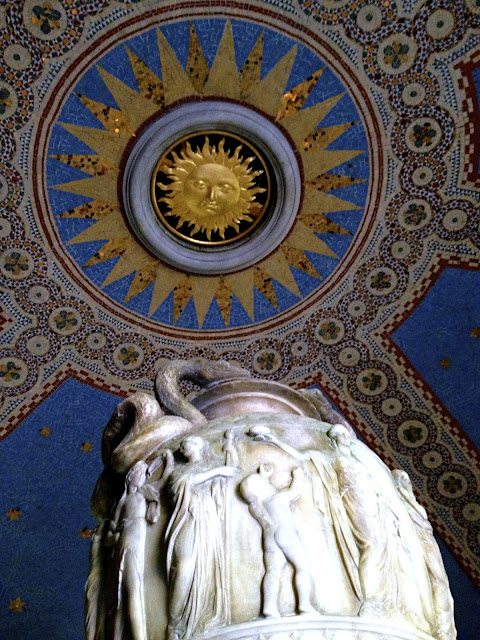The Bush Inn is described by some as the
best pub in Wales. Maybe that’s why it’s so busy on Sunday, when I pop in for a
pre-lunchtime drink with Chris and his father. I soon realise, however, that it’s
full of local men who’ve escaped their womenfolk for a Sunday pint, so I decide to
make an escape of my own. An excellent decision, as it turns out, for the
village of St Hilary offers up a lovely walk taking in a treasure trove of a church and
the surprise discovery of an eco-retreat.
 |
| Round the bend |
Tucked away off a footpath round the back
of the village, the Roundhouse Project is an alternative home built by
archaeologist Dafydd Wiliam, modelled on a Celtic roundhouse. It has a timber
framework, mud walls and a thatched roof (made from water reeds donated by the
National Wetlands Centre in Llanelli) and it has taken Dafydd and three friends
four years to build. Inside it’s open plan and cosy, thanks to the addition of
glazed doors and double-glazed windows. The project aims to demonstrate the
concept of low-impact and low-cost development, using only locally sourced
materials – a wow factor that has been educational as well as enchanting, with
hundreds of schoolchildren visiting the site over the years.
 |
| It can also be flat-packed and moved |
I walk on to St Hilary’s little church, which dates back to the 14th century, and was restored in the 19th by that master of Victorian Gothic, Sir Gilbert Scott (St Pancras and the Albert Memorial). The church is surrounded by a leafy, tranquil graveyard, while the stained glass inside is elegantly
restrained. I notice the Basset family tomb – the Bassetts used to run things around here – as well as the armour-clad effigy of
Thomas Bassett, who died in 1423, his face a strangely haunting sight in the silent gloom of the church’s interior.
 |
| Knave's in the hood |
It's all in peaceful contrast to our excursion the previous day, to Nash Point lighthouse on the the Vale's south coast. The skies were the brightest blue, but the ice-cold, gusting winds almost blew us off the cliffs and into the Bristol Channel. This time, when someone said ‘I’m off to the pub’, I was only too happy to follow.
 |
Perfect conditions for photography...
|
 |
| ...but not for staying out of doors |







































